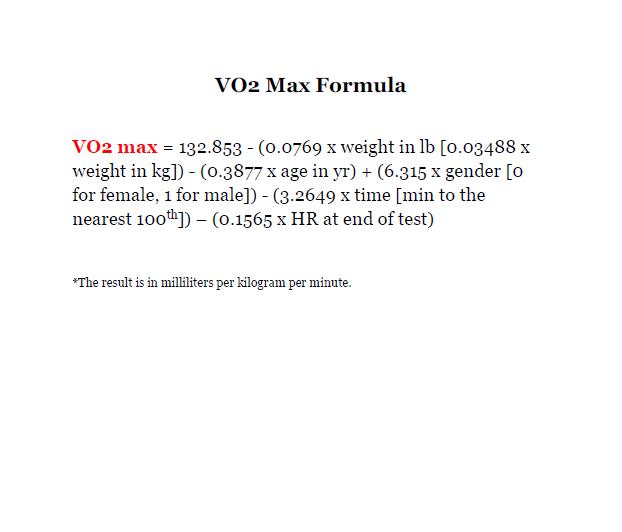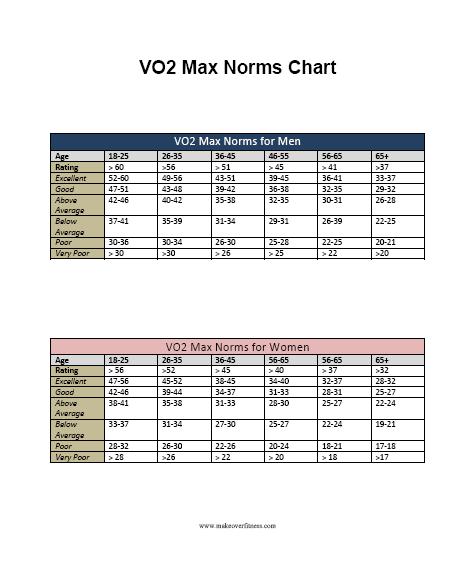This test was developed in 1986 by the Rockport Walking Institute to measure the cardio endurance of the general public.
Here is how to perform the Rockport Walking Treadmill Test
1. Precede the test with a warm-up consisting of static stretching and walking on the treadmill. Find the exact pace at which the client can walk vigorously for one mile.
2. Have the client walk at the established pace for one mile. Record the time.
3. Immediately palpate the pulse for 10 seconds and then allow the client to cool down.
4. Multiply the 10-second count by six.
5. Plug your results into the vo2 formula below
VO2 max = 132.853 - (0.0769 x weight in lb [0.03488 x weight in kg]) - (0.3877 x age in yr) + (6.315 x gender [0 for female, 1 for male]) - (3.2649 x time [min to the nearest 100th]) – (0.1565 x HR at end of test)
*The result is in milliliters per kilogram per minute.
6. Check the VO2 norms chart for your results.
Other treadmill test
Here are some other treadmill assessments that have been tested over the years.
Balke Treadmill Protocol
To administer the Balke and Ware exercise protocol, set the treadmill speed at 3.4 mph and the initial grade of the treadmill at 0% during the first minute of exercise.
Maintain a constant speed on the treadmill throughout the entire exercise text. At the start of the second minute of exercise, increase the grade to 2%. Thereafter, at the beginning of every additional minute of exercise, increase the grade by only 1%.
Bruce Treadmill Protocol
The Bruce, Kusumi, and Hosmer (1973) exercise test is a multistaged treadmill protocol. The protocol increases the workload by changing both the treadmill speed and percent grade.
During the first stage (minutes 1 to 3) of the tes, the normal individual walks at a 1.7 mph pace at 10% grade.
At the start of the second stage (minutes 4 to 6), increase the grade by 2% and the speed by either 0.8 or 0.9 mph until the client is exhausted.
Treadmill Ramp Protocols
Kaminsky and Whaley (1998) developed a standardized ramp protocol for assessing the functional cardiorespiratory capacity of symptomatic sedentary, and apparently healthy individuals. For this protocol, the treadmill speed increases gradually every minute.
The minimum speed 1.0 mph; the maximum speed is 5.8 mph. The treadmill grade also increases gradually every minute. The minimum grade is 0%; the maximum grade is 20%. Every 3 min during this ramp protocol, the work rates (i.e., speed and grade) equal those of the traditional Bruce protocol.



